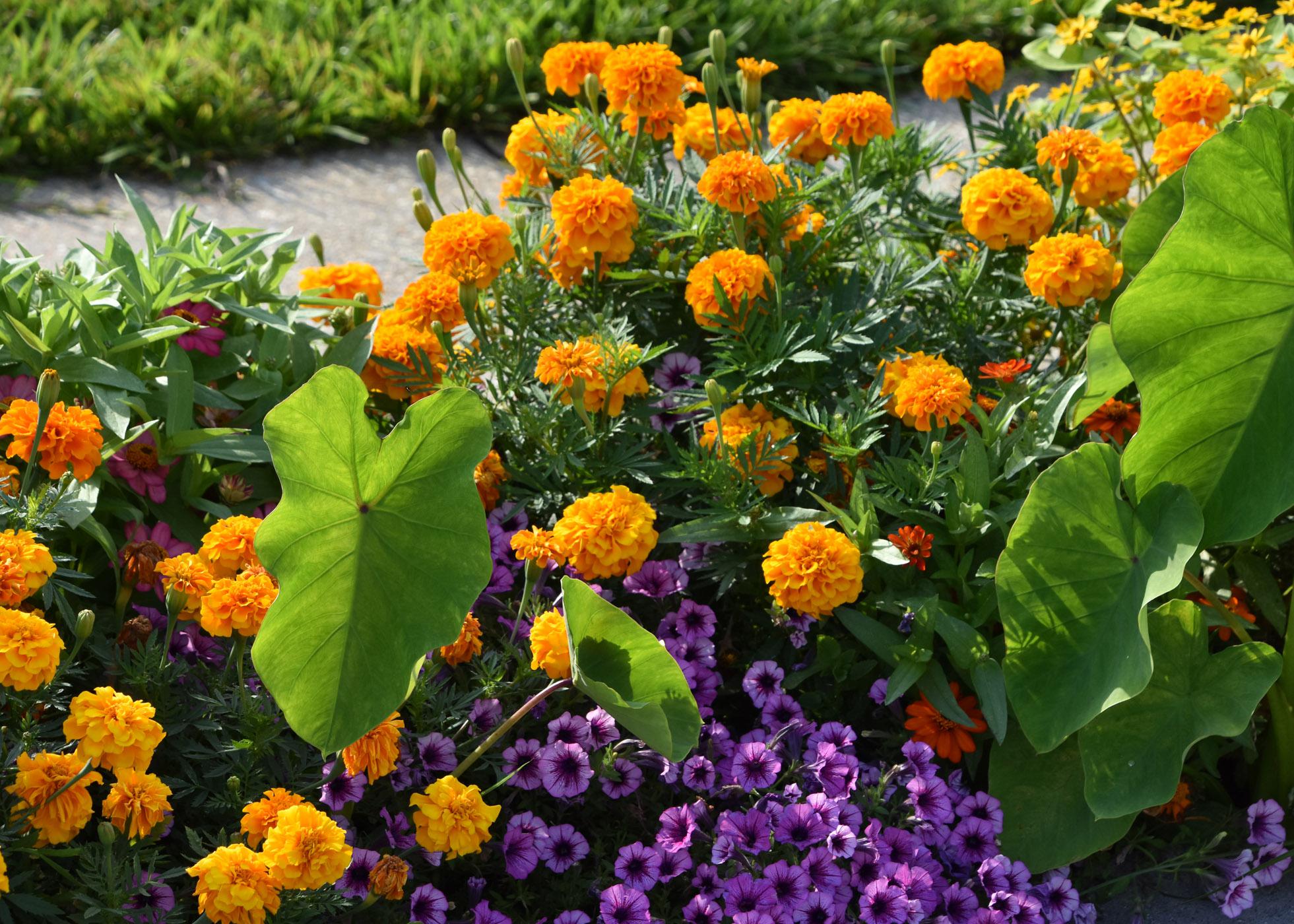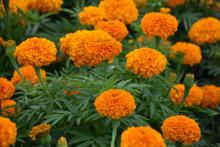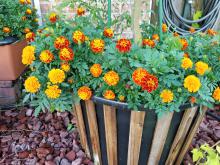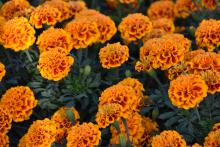Information Possibly Outdated
The information presented on this page was originally released on August 17, 2020. It may not be outdated, but please search our site for more current information. If you plan to quote or reference this information in a publication, please check with the Extension specialist or author before proceeding.
Mari-mums are marvelous for fall landscapes, gardens
Late summer means it’s time for another round of garden activities.
This past weekend, I finally transplanted my fall tomato crop. Several varieties of heirloom determinant tomatoes will start producing about the third week of September and continue all the way to the first hard frost.
I also changed things up for my fall vegetable garden and transplanted some of my favorite dwarf French marigolds. I think French marigolds are perfect for the fall.
In fact, there’s a long-standing practice in the Southern states of planting all kinds of marigolds instead of the traditional fall garden mum. This is due to their nonstop color display of yellow, orange and rusty-red flowers. These earthy and warm colors are perfect for any autumnal decoration and display.
Fall-planted marigolds also have a special name: mari-mums. I like them because their color lasts longer than traditional garden mums.
There are a couple of types that are perfect for the fall landscape.
My favorite is the French marigold. There are single as well as double flowers, and colors include yellow, orange and reds along with stripes. These are short-statured plants, being generally only about 15 inches tall. These free-flowering annuals need to be deadheaded.
The other type is the African marigold, also called American marigold. There is a big variety of sizes from dwarf to giants over 3 feet tall. For the fall, I would choose shorter selections.
The double flowers of African marigolds look like colorful yellow, orange, dark orange and white poms-poms in the garden. The flowers themselves can be up to 3 inches in diameter.
As with the French Marigolds, the African marigold needs to be deadheaded. I like to collect the dried seed heads and sprinkle them around my Ocean Springs landscape so I’m surprised the next spring when they sprout up in unlikely places.
Fall is a great time for marigolds as the moderating temperatures -- I won’t say cooling, because I don’t want to jinx things -- seem to make the plants even more expressive with their colors.
Make sure your landscape beds are prepared by loosening the soil and adding some good, composted organic matter. I find that using a 3- to 4-month controlled-release fertilizer is all the fertilization needed for the fall season.
As always, be sure to keep the landscape bed consistently moist. I use drip or trickle irrigation to keep my fall mari-mums happy.
Marigolds grown in the fall have few pests to worry about. In fact, many gardeners believe companion planting marigolds with their fall vegetable crops actually helps to repel garden insect pests.
Your best bet for mari-mums this year would be to buy transplants at the garden center. This will allow you to make an immediate landscape impact. Last weekend, I saw some nice-looking transplants at the local garden center.
But if you’re adventurous, there is still a little time to sow some marigold seeds to enjoy for a real October surprise.






